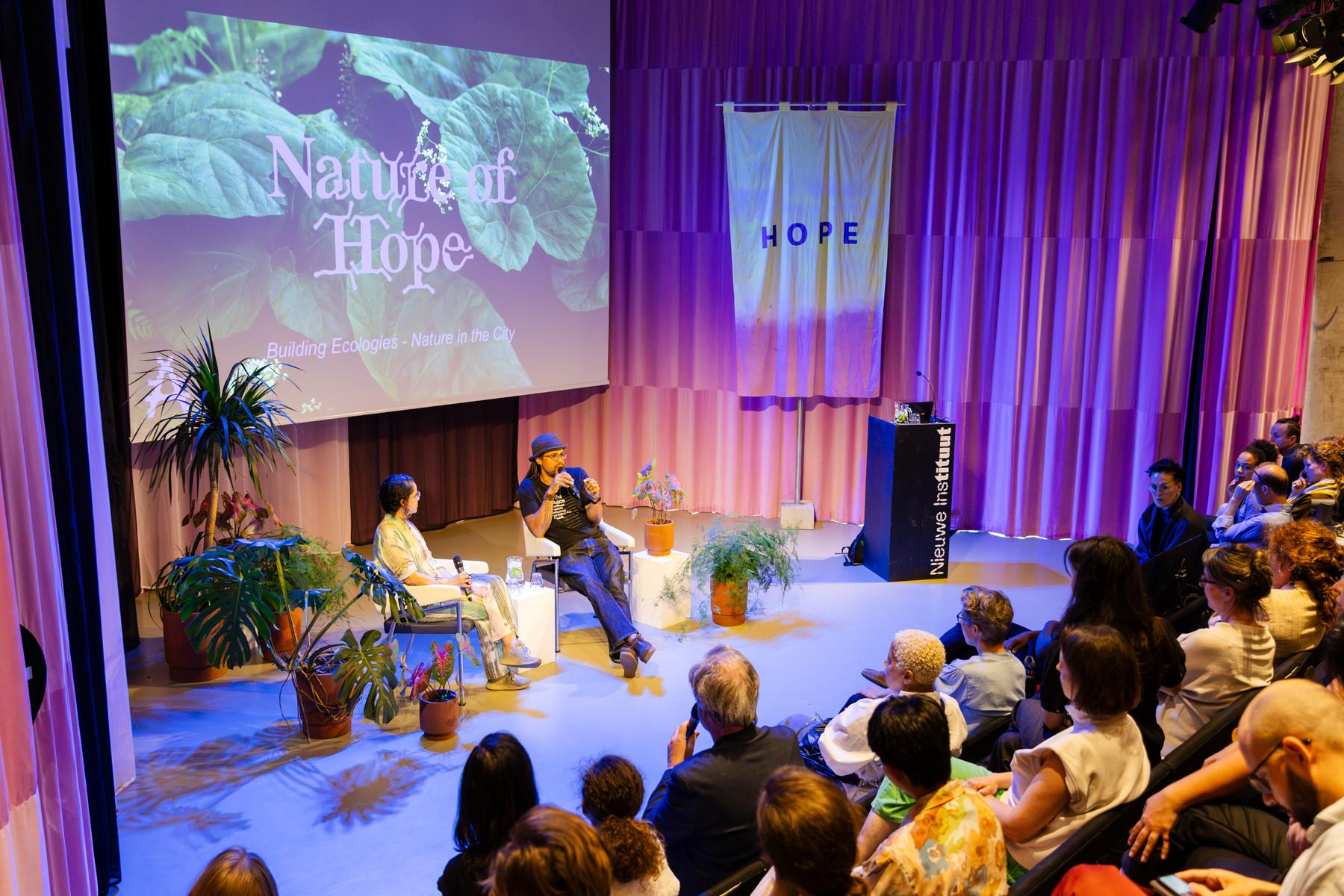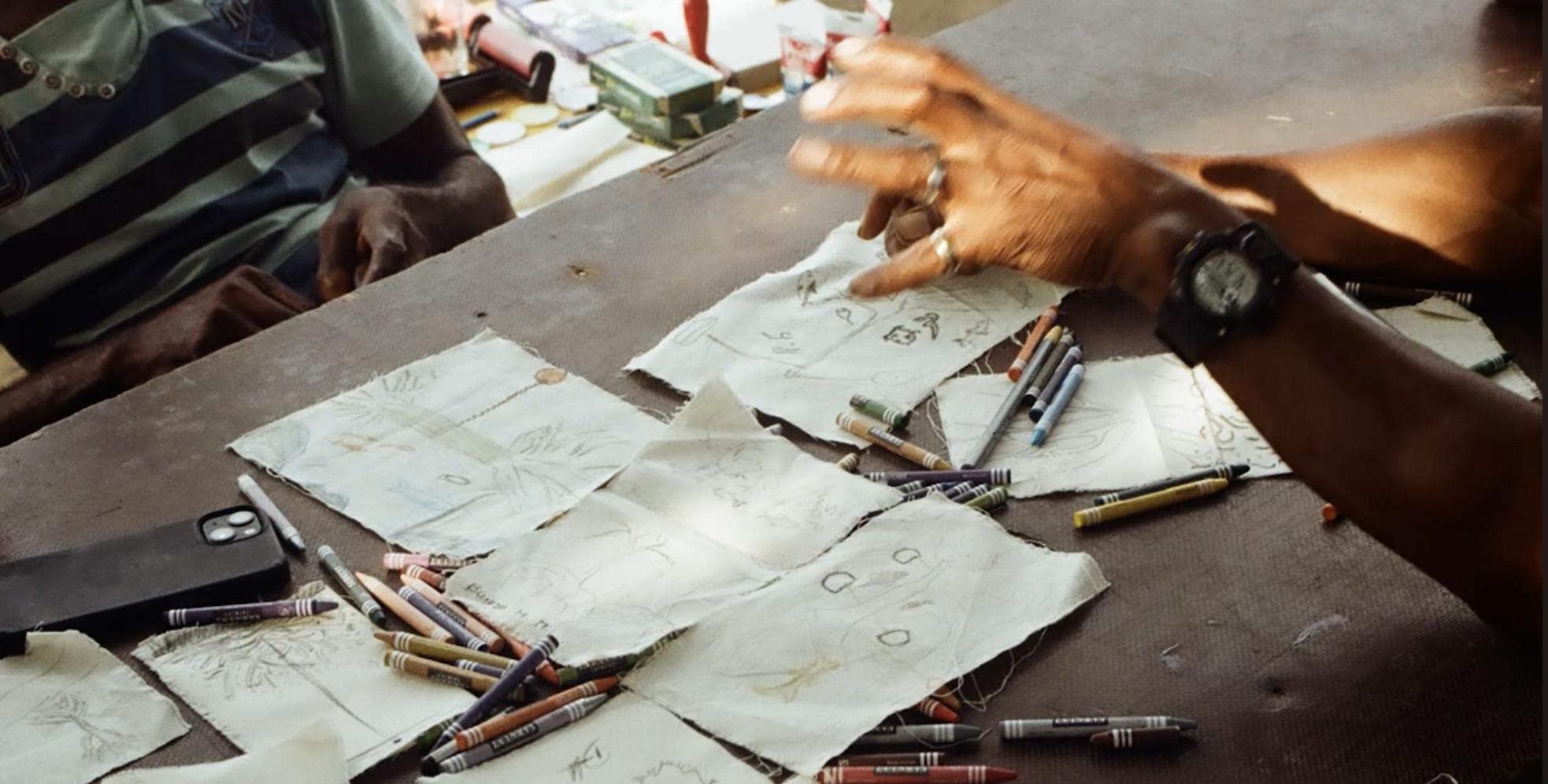Who builds towards a green future on a daily basis? To show how big ideas and visions find their way into reality, "Botanical Monuments" is part of this edition of the biennial: a collection of Rotterdams community initiatives around urban nature. They represent the ambition of the IABR to change the relationship between architecture and nature. But how does this ambition come to life in and around the city, who are the people behind big visions and what can we learn from them? Sabine and Jocelyn create the series "Hope Sowers" and engage with those taking steps towards an architecture that, in collaboration with nature, builds for future generations.
Nestled within the bustling urban landscape of Rotterdam, Shared Grounds at the Gouwplein Biodiversity Garden emerges as a beacon of community, art, and environmental stewardship in the Oud Charlois neighborhood. Originally an underused public space, it has been transformed into a place where interactions can arise between both humans and non-humans. Shared Ground was founded by the collective vision of Rotterdam South artists Kate Price and Guillem S. Arquer, who found common ground in their passion for composting. Their collaboration, along with the efforts of Maziar Afrassiabi, founder and director of Rib—an experimental contemporary art institution nearby—has cultivated this once-neglected land into a garden with a strong, innovative vision on how to use space. In 2019, they seized the opportunity to rejuvenate this plot of land, integrating it into a broader network.
The transformation of Shared Grounds didn't happen overnight—it required significant effort and dedication to turn what was once overlooked into a cherished community space. Kate details the hands-on steps that had to be taken to interact with the area: "We began by clearing away debris and then experimented with various biodiversity-aware practices, such as creating dry hedges to compost the organic materials we collected from the site. Additionally, we installed an insect hotel." Guillem further explains the unique challenges and intentions behind their work: "This space was virtually a non-place, with no defined purpose, which made it a compelling setting to observe how various users interact with it. We aimed to do more than just beautify; we aimed to create space for human and more-than-human neighbors, considering and respecting the species who were, temporarily or not, already using the space, being part of that ecosystem. Our project challenges traditional notions of park management and encourages a dialogue about coexistence and mutual respect between humans and ecological processes."
The project has faced significant challenges, particularly in navigating municipal regulations and managing varying expectations within the community. Guillem reveals some of the difficulties they've encountered: "Despite being funded by the municipality of Rotterdam, there's a disconnect with its operational systems. Regrettably, the city’s maintenance teams have repeatedly destroyed the plants we've carefully nurtured—ironically, the very plants they've funded." The Shared Ground team has developed a strategic response to this ongoing issue. "We noticed that the maintenance teams spare certain plants they recognize as 'government plants'—the ones deemed 'good' by official standards. So, we adapted our strategy to group our recently planted species with the ones from the municipality—effectively blending our efforts with the existing municipal landscape. This approach has turned our garden into a kind of guerrilla garden, where we continuously adapt and innovate in response to these challenges. It's fascinating to immerse oneself in these complex dynamics."
Guillem discusses their efforts to redefine this patch of land beyond the conventional label of a park, emphasizing the complex relationships that influence this urban space: "We aim to transcend traditional definitions and grasp the real-time, authentic dynamics that characterize this area. A park embodies multiple possibilities throughout a single day—used one way in the morning and quite differently at night. Labeling it as a 'park' or 'garden' is merely our way of interpreting it, but we've come to recognize that this is just our perspective. The animals, the homeless person who finds shelter here at night, or the child playing during the day, each interact with the space in unique ways, reflecting the true diversity of the community. Each use of the space adds a layer to its story: this understanding allows us to truly appreciate and enrich its contribution to the community," explains Guillem.
The team behind the garden hopes their efforts will encourage other cities to rethink their approach to urban green spaces. Maziar expands on this vision: "Within the realm of urban architecture, we are often lumped together with the concept of ‘a park’, yet there are countless underutilized spaces that could serve the community—if only there was more support from municipal systems. Our focus isn't just on enhancing biodiversity and fostering community ties: we aim to transform an overlooked plot into a recognized and cherished local garden. By adopting such innovative practices, we shed light on pressing urban issues, bringing what was once invisible into the forefront of public awareness." Kate highlights the significance of each interaction within the garden, noting, "Every interaction, no matter how minor, is crucial to recognizing and valuing this space. These moments of engagement are just as important as the broader ecological changes we are striving to achieve."
Curious about Shared Grounds? Click here for their spot on the Botanical Monuments route. Opening hours, activities, and more information can be found here.




